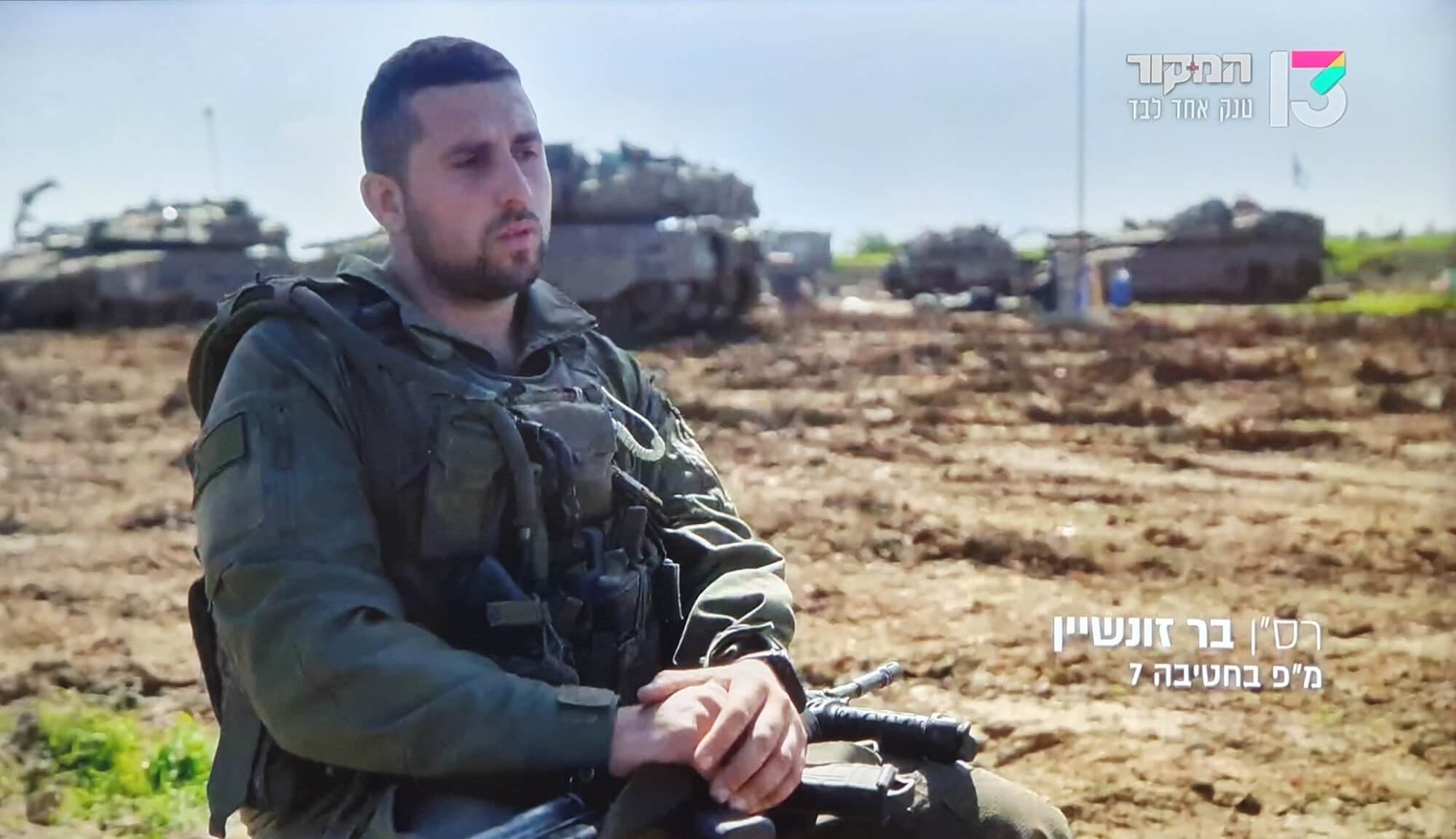In Israeli military terminology, the so-called “Hannibal Directive” is the policy of firing upon one’s own soldiers to avert a prospective captive situation.
There is a growing amount of evidence and testimony that suggests that on October 7, the Hannibal Directive was implemented, at least to a certain extent, on Israelis. What’s more, growing testimonies indicate that this policy was extended to Israeli civilians in the form of indiscriminate fire from helicopters and tanks. The recent outstanding Al Jazeera investigation, “October 7,” addresses this question at considerable length.
Last week, another testimony involving such acts appeared on Channel 13 and was repeated a day later on Ynetin which an armored company commander, Captain Bar Zonshein, tells of how he fired tank shells at vehicles driving towards Gaza near Kisufim — about 2 kilometers away from the Gaza perimeter fence.
“We identified two pickups driving Toyotas, and on them, there was a large number of people standing in the cabin, and there was a pile of people. I don’t know whether they were corpses or living people…And I decide to attack these vehicles,” Zonshein says.
One must point out that Zonshien’s description of a “pile” of people could either be military or civilians, but those distinctions apparently did not factor into his calculations. This is, of course, significant in Israeli terms because the Hannibal doctrine had hitherto only been limited to soldiers.
The next part of Zonshein’s testimony, however, offers a revealing insight into his rationale for attacking the pickup trucks: “Because something in my gut feeling told me that they could be on them.”
In other words, Zonshein thought that his fellow soldiers might be among the captured — which is precisely why he opened fire.
The interviewer presses him, reaffirming they’re talking about the possibility of targeting soldiers. “Maybe you would have killed them. They are your soldiers.”
“Right,” Zonshien replies. “But I decide that this is the right decision, that it’s better to stop the abduction and that they not be taken.”
The interviewer then asks whether, in retrospect, he acted correctly.
“I feel that I acted correctly,” he replies.
Then the obvious question, and to the point: “Is this the order? A Hannibal order?” the interviewer urges.
Zonshein all but confirms it, using heavily suggestive language.
“In the order itself, a few operational steps need to be taken,” he says. “One needs to fire at central gathering points and [military] control points, and in case of identification [of one’s own soldiers]one needs to also do that thing.”
“That thing,” of course, is the Hannibal directive.
Zonshein does not feel morally weighed down about his decision, he explains, because “today, I know that we didn’t hit them,” although he said earlier that he hit the first pickup truck.
Zonshein seems to believe that the Israelis in the truck were not harmed, making vague references to “things that I prefer not to reveal.”
But his opaque references are dispelled by his unequivocal judgment that being taken captive is a fate worse than death.
“It doesn’t weigh on me because this scene of people being taken by murderers who hold them captive and under torture — that, I think, is a much worse thought,” he explains.
It has yet to be confirmed whether Israeli prisoners have been tortured under Hamas captivity. As for civilians, the indications so far suggest that their treatment has been relatively humane, as also indicated by the hostages themselves. The opposite can be said about Palestinian detainees in Israeli captivity, whose systematic and widespread torture has been well-documented, even by mainstream Israeli television.
One might argue, of course, that the soldier acted on his own personal initiative and, perhaps, that his actions were based on a general widespread belief within Israeli society of the supposed horrors of captivity under Hamas. But aside from the allusions in Zonshein’s testimony that suggest otherwise, the political rationale for killing potential Israeli captives is fairly clear. In 2006, when Israeli corporal Gilad Shalit was captured, Israel eventually exchanged him in 2011 for 1,027 Palestinian prisoners. This is not something Israel wants to repeat.
The reigning notion in the Israeli army seems to be — let’s sacrifice their lives lest they be used as bargaining chips. And, of course, their way of getting past the Hannibal Directive’s underlying moral conundrum is to tell themselves that it is better for them to die than fall into the hands of “human animals.”
